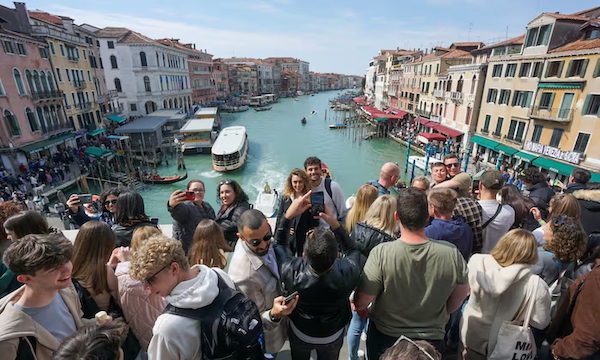


(quote)
Italy’s artisan glassblowers feel heat as gas prices soar
Surging energy prices are posing problems for the artisan glassblowers of Italy’s Murano. They have seen off plagues and pandemics and changed their business model to outrun low-priced competition from Asia. But now methane prices are shattering their economic model.
The dozens of furnaces that remain on the lagoon island where Venetian rulers transferred glassblowing 700 years ago must burn around the clock, otherwise the costly crucible inside the ovens will break. But the price for the methane that powers the ovens has skyrocketed fivefold on the global market since October 1, meaning the glass-blowers face certain losses on orders they are working to fill, at least for the foreseeable future. “People are desperate,” said Gianni De Checchi, president of Venice’s association of artisans Confartiginato.
Venice Artisans Pushed to the Brink by Gas Crisis
MURANO, Italy—In the unusually cold workshop where he normally creates glass vases and candelabras, Fabio Onesto stared in despair at the seven furnaces he turned off in mid-October to save money. He stopped production after his gas bill in September rose to 24,450 euros, or around $28,000, almost triple what he paid in the previous months of this year, and more than he possibly can sell his wares for.
The Glass Blowing Process
An art glass studio is filled with hot stuff. There is a furnace in which clear glass is melted. The glass is held inside a crucible, pictured at the right. There is; a Glory Hole where the glass blower forms his or her work; an oven that keeps pipes and punties hot; and an annealing oven to slowly cool down finished work.
A piece begins when the glass blower reaches inside the furnace and into the crucible that is filled with clear, melted glass and gathers a layer of molten glass on the end of a steel blow pipe. The artist then rolls the molten glass on a steel table called a marver to give it a cylindrical shape. The glass is then heated in the glory hole – all the while the artist is turning the blow pipe and keeping it in constant motion.
There will be many trips back and forth to the Glory Hole because the glass needs to be kept above 1000⁰ F.
Murano is the second largest island in the Venetian Lagoon, after Venice. Currently, it has 7,000 inhabitants and it is world-renowned for its glassware, attracting millions of tourists every year.
Glass Factories
Although glass-making has taken place in Murano for centuries, it is still to this day the island’s principal industry. For this reason, tourists will normally be asked and led to visit one of the numerous glass factories in the small town. In Murano, may century-old techniques are still used, so watching the artisans work is a pretty unique experience. This said, after discovering how the glass is made, you will be guided into the factory’s shop in case you want to purchase any of the items.
The Murano Glass Museum
If you fancy seeing more glassware, you can visit the Murano Glass Museum with over 4,000 objects, including Phoenician flasks, goblets, mirrors and kaleidoscope beads. The most spectacular item is a chandelier that weighs 330 kilos (727 Ibs).
(unquote)
Image courtesy Antonio Calanni / AP, Patrick Tombola / Wall Street Journal and Dream of Italy






